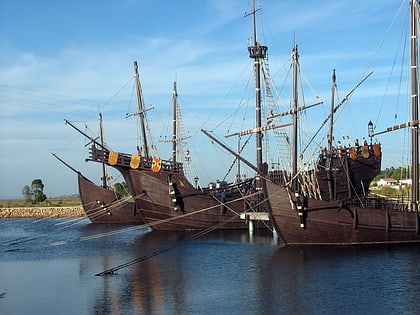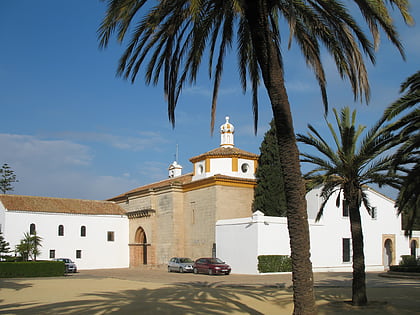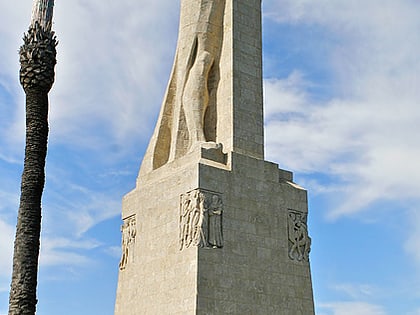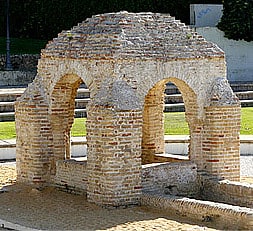Monasterio de Santa Clara, Moguer
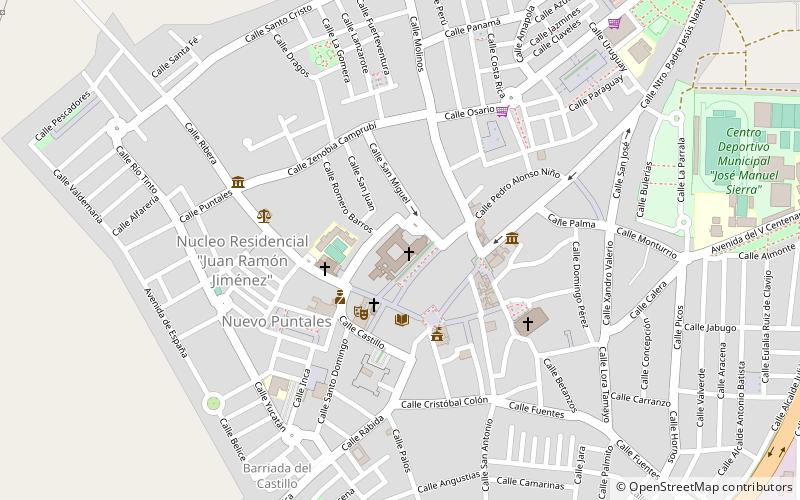

Facts and practical information
The Monastery of Santa Clara is located in Moguer, Province of Huelva. It is included as an Asset of Cultural Interest of the Lugares Colombinos.
It is the most outstanding Columbian monument in Moguer. Its abbess Inés Enríquez, aunt of King Ferdinand the Catholic, supported the voyage of discovery in the court. On the return of the voyage of discovery, Christopher Columbus and the rest of the Moguer people spent the first night in the church, fulfilling the vow made on the high seas when a storm almost capsized the Niña.
It was founded in 1337, for Poor Clare nuns, by Alonso Jofre Tenorio, first lord of Moguer and first patron of the monastery.
The convent is divided into two main areas: the religious enclosure and the dwellings. As for the former, it includes various rooms such as the "de profundis" chapel, the former pantheon of the Poor Clares, where 16th century Mudejar craftsmanship is preserved. The church is the noblest part of the building, being a Gothic-Mudejar temple with three naves separated by pointed arches, the central nave being wider and longer than the lateral ones, and being crowned by a polygonal apse. At the foot of the church is the double choir, high and low, where the Nasrid choir stalls are located, a unique 14th century work in its style.
As for the conventual residence, it is made up of various cloisters around which the rooms are distributed. The cloister of the Mothers stands out, whose low arches, from the 14th century, make up the oldest cloister in Andalusia. Around it are the dormitories, a two-storey pavilion from the 16th century, with Renaissance craftsmanship, the refectory, a rectangular room with a pointed vault, the kitchen, which conserves an enormous 14th century chimney, the Renaissance infirmary, etc.
As far as the works of movable art are concerned, we can highlight works such as the main altarpiece, a mid-17th century work by Jerónimo Velázquez; in sculpture, the tombs of the Portocarrero family, tombs carved in marble in the 16th century, which represent the recumbent bodies of 9 people in three solides; the altarpiece of the Circumcision of the Lord, by Martínez Montañés, from the now disappeared convent of San Francisco de Huelva; the Virgin of the Beautiful Love, from the 16th century; the Child Jesus of Tears, from the 18th century, work of La Roldana; the English Gothic relief of the Ecce Homo, from the 15th century; the Immaculate Conception from the 18th century; or the Christ Tied to the Column, Renaissance; in painting, the pictorial decoration of the doors of the choir, from the 15th century, the mural of San Cristóbal, the Annunciation from the 15th century, the Annunciation from the 15th century, the mural of the Virgin Mary, from the 15th century, and the altarpiece of the Virgin Mary, from the 15th century.XIV the Annunciation of the XV century, the Franciscan Virgin and the Descent of Christ, the Sacred Stretcher or the Dormition of the Virgin and the Baptism of Christ, both from the XVIII century; in the sumptuary arts, the choir books of the XV century, the set of dalmatics of the XVII and XVIII centuries, and other works.
The monastery has been listed as a National Monument since 1931.
Monasterio de Santa Clara – popular in the area (distance from the attraction)
Nearby attractions include: Wharf of the Caravels, La Rábida Friary, Monument to the Discovery Faith, Fontanilla.

